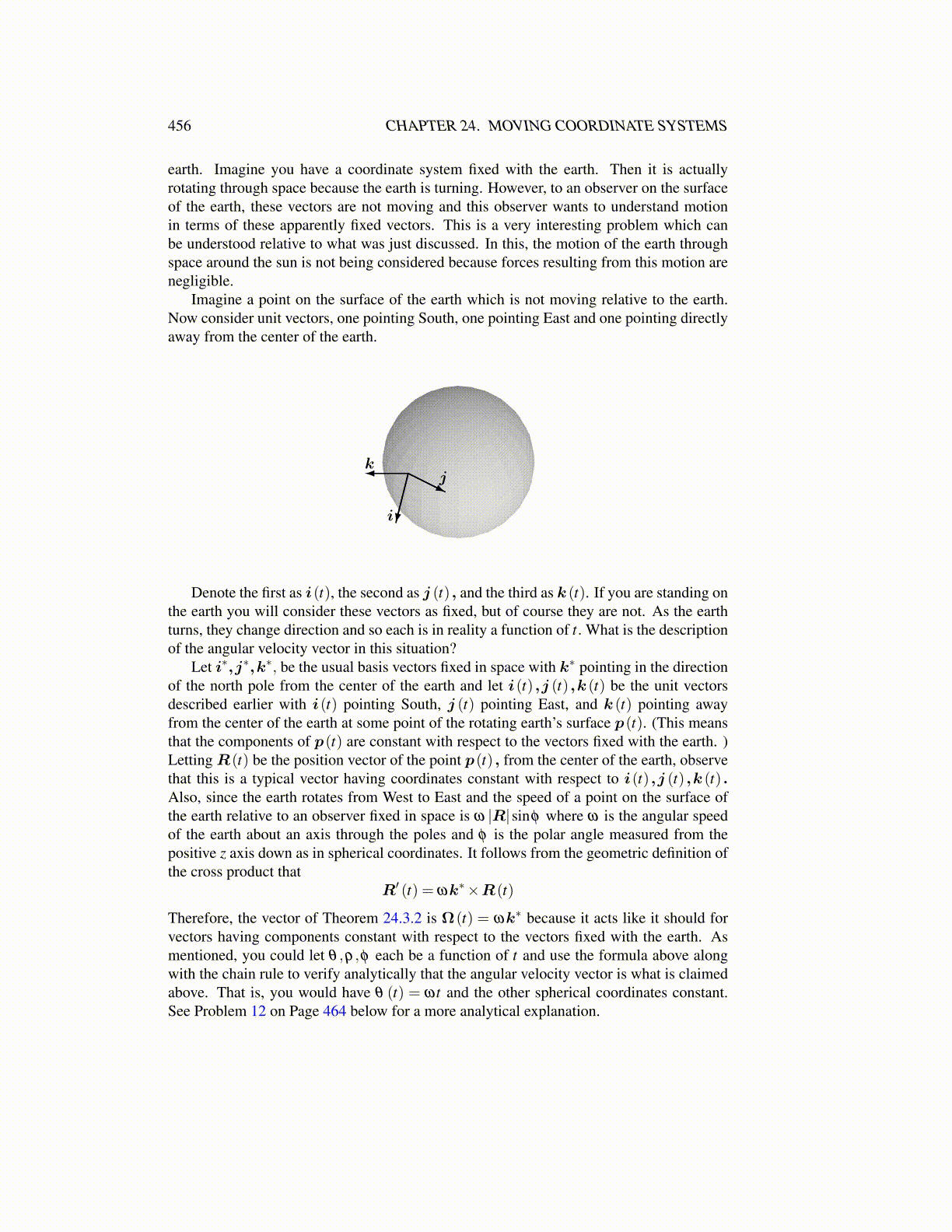
456 CHAPTER 24. MOVING COORDINATE SYSTEMS
earth. Imagine you have a coordinate system fixed with the earth. Then it is actuallyrotating through space because the earth is turning. However, to an observer on the surfaceof the earth, these vectors are not moving and this observer wants to understand motionin terms of these apparently fixed vectors. This is a very interesting problem which canbe understood relative to what was just discussed. In this, the motion of the earth throughspace around the sun is not being considered because forces resulting from this motion arenegligible.
Imagine a point on the surface of the earth which is not moving relative to the earth.Now consider unit vectors, one pointing South, one pointing East and one pointing directlyaway from the center of the earth.
i
kj
Denote the first as i(t), the second as j (t) , and the third as k (t). If you are standing onthe earth you will consider these vectors as fixed, but of course they are not. As the earthturns, they change direction and so each is in reality a function of t. What is the descriptionof the angular velocity vector in this situation?
Let i∗,j∗,k∗, be the usual basis vectors fixed in space with k∗ pointing in the directionof the north pole from the center of the earth and let i(t) ,j (t) ,k (t) be the unit vectorsdescribed earlier with i(t) pointing South, j (t) pointing East, and k (t) pointing awayfrom the center of the earth at some point of the rotating earth’s surface p(t). (This meansthat the components of p(t) are constant with respect to the vectors fixed with the earth. )Letting R(t) be the position vector of the point p(t) , from the center of the earth, observethat this is a typical vector having coordinates constant with respect to i(t) ,j (t) ,k (t) .Also, since the earth rotates from West to East and the speed of a point on the surface ofthe earth relative to an observer fixed in space is ω |R|sinφ where ω is the angular speedof the earth about an axis through the poles and φ is the polar angle measured from thepositive z axis down as in spherical coordinates. It follows from the geometric definition ofthe cross product that
R′ (t) = ωk∗×R(t)
Therefore, the vector of Theorem 24.3.2 is Ω(t) = ωk∗ because it acts like it should forvectors having components constant with respect to the vectors fixed with the earth. Asmentioned, you could let θ ,ρ,φ each be a function of t and use the formula above alongwith the chain rule to verify analytically that the angular velocity vector is what is claimedabove. That is, you would have θ (t) = ωt and the other spherical coordinates constant.See Problem 12 on Page 464 below for a more analytical explanation.